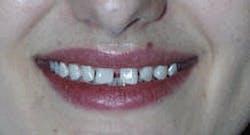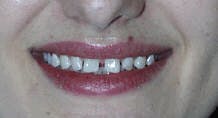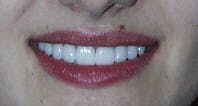Getting started in digital photography
Part 2: Managing the images
Donald S. Sherman, DMD
In the August issue of Dental Economics I introduced you to "Getting started in digital photography." If you now own a digital camera and would like to use the images in your practice, you have several choices. Images produced by digital camera, scanner, intraoral camera, or digital X-ray system can be incorporated into mass-market image-management software, dental practice management software, or software image-management packages developed specifically for dentistry.
Image-management software, like Adobe PhotoDeluxe for Business, Photosuite III, or Microsoft Picture It! 2000 can be easily used in the dental office. Each program costs less than $100. These programs can import the image from a digital camera, scanner, CD, VCR, video camera, or a download from the Internet. You can straighten the image, rotate it, trim the size, eliminate red eye, and add text descriptions such as a patient`s name and date. You can also change the color or tint of the image. These programs will print the images in various sizes, export them into some dental practice-management programs, e-mail, or incorporate them into a slide presentation. You can also import an image into a word-processing program along with a treatment plan letter to a patient or referring doctor. You can even import the images into a program like Microsoft Publisher and produce an office brochure. These images can also be transmitted to a dental insurance company via NEA Fast Attach (www.nea-fast.com).
Many Windows or Mac dental office-management programs - such as Softdent, Dentrix, Computer Age Dentist, and Practice Works - have provisions for importing digital images into a patient`s file. Additionally, Softdent and some of the others have provisions for any Twain device, such as most digital cameras and scanners; they also have built-in links to many dental image-management programs. They can place an image from the camera or scanner directly into the patient file. Once the images are stored, the patient can view them on a computer screen. This method is also valuable for documentation. However, dental practice-management programs do not have the sophisticated image-management capabilities of Adobe PhotoDeluxe and other similar mass-market software. You can, however, use these types of programs to first adjust the images, and then import them into your practice-management software.
The best way to handle image-management in dentistry is with software developed specifically for the dental market. Programs like Tiger View (www.televere.com), DICOM (dicom-image.com), Apteryx X-Ray Vision (apteryxware.com), and Vipersoft (Vipersoft.com) offer sophisticated dental image management. These programs include features such as image storage, manipulation, printing, and patient treatment plan slide shows. Some allow sophisticated built-in duplication of X-rays, cosmetic imaging, and whitening of teeth for bleaching demonstrations. They can also produce dental X-ray duplication reports, with automatic reporting of patient name and address, the date the photo or X-ray was taken, social security ID numbering, and the name and address of the doctor. These programs vary in their features and cost; most can handle digital images produced by Picture CD, digital cameras, digital X-ray sensors, intraoral cameras, and scanners. DICOM offers a very basic program for free, charging only as you add features. These programs generally cost from $1,200 to $2,900.
A key difference with dental image-management software is how it links to your current dental practice- management software. All can operate as stand alone products. However, in the stand alone mode, you must type in all patient information while creating the image. Viewing the patient images in stand alone mode also requires launching the image program, even if you are in the patient`s file within your practice-management program. However, Tigerview, DICOM, Apteryx X-Ray Vision, and Vipersoft can be bridged (linked) to Windows-based practice-management software, and can, to some degree, work almost seamlessly within your current dental office software.
Bridging one software package to another, however, requires cooperation between the image-management and practice-management companies. Image-management software companies have developed "hooks" that link their products to most dental practice-management software, but they vary in how "tight" the link is. In some cases you can launch the digital image-management software from within the practice-management software. The images, patient name, and other pertinent information appear in the image-management software, based on the patient records currently open in the package. In other cases, the link is not as strong. You must enter the patient name within the image-management software to view the images. DICOM has arranged with many digital X-ray companies to have the X-ray sensors use DICOM software, rather than the manufacturers` image-management software. Apteryx X-Ray Vision uses a program called Name Grabber that allows for a tight link to patient information from many practice-management software packages. Schein now distributes Vipersoft to enhance the relationship with Dentrix. These companies continue to develop relationships with software companies, digital X-ray, and intraoral camera companies to more tightly integrate image management. You must investigate the degree of integration by checking at dental meetings, or contacting the companies involved. Before you buy, be sure to view a demo to judge how well the packages work together.
Getting these programs to work well together is not always easy. Reaching some level of integration on your own with a digital camera image isn`t difficult. The complications arrive as you add more sources of digital imaging. Sales people and technical support staff are not always able to get the image-management software working with their product. They are trained to sell and support their own practice-management software, not the image-management products they are bridged to. If you have invested heavily in a company`s products, such as digital X-ray sensors, a capture card, an intraoral camera , a digital camera, a scanner, and CD-ROM interactive patient education with both a computer monitor and a TV monitor all operating on a network, then quality on-site technical support is certainly warranted. Most of these products can work harmoniously together, but it takes quality technical support to set it up. Properly installed, the products will not need a lot of attention.
Systems integrators are another source to link your hardware and software products reliably. Get recommendations from the companies that market management software. Northeast Strategic Dental Integration (800-721-9349) is one of the few companies dedicated to working toward systems integration of the many different imaging products designed for dentistry. They can assist with planning and engineering, and can work with most popular intraoral cameras, digital X-ray equipment, and practice-management programs, as well as computer and network issues.
Digital image documentation is evolving from a legal standpoint. The ADA Committee on Dental Informatics, under the direction of Robert Lapp, Ph.D ([email protected]) is developing standards both for the secure storage and transmission of digital images. Many court systems accept digital images, but require they be stored using a secure method that can detect manipulation. The companies which sell digital X-ray software and some dental image-management software programs have security features built into their software.
Digital images are works in progress; however, the technology can still be a beneficial addition to dental practices. With competent technical support, you can get proper integration quickly. Expect to see rapid improvement in digital image intergration in the near future. As I prepare information for my lectures on digital imaging, I find I must update the information I present every month. I check into digital imaging Web sites daily. There is always something new and exciting.
Dental practices can easily begin using digital imaging. A 35 mm camera, a picture disk, and images imported directly into your Windows or Mac-based practice-management software can be purchased at very little cost. Next, add a digital camera, then consider image-management software for added sophistication.
Using digital enhancements, dentists can give patients dramatic "before and after"examples.


